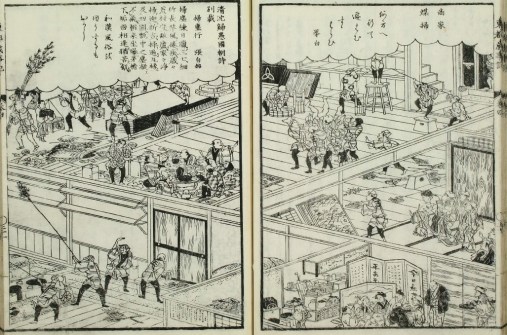As the year comes to an end, households, business establishments, and religious grounds have a traditional practice performed called ōsōji (大掃除). This is a common word one will hear especially in December, as it refers to cleaning the entirety of one’s house or living space. While this practice is well throughout Japan, there is even an older one, which is considered a rarity, yet still practiced today. For today’s article, we’ll look into the origins of ōsōji, when the best time to start, and what entails in keeping your home clean.
ANCIENT PRACTICE OF CLEANING
The older form of ōsōji is believed to be the practice of susuharai (煤払い), which stands for cleaning the soot that would have accumulated in one’s living space within the span of a year. This soot is from the smoke created from the burning of candles, stove while cooking and the like. It was a form of ritual that went further than merely cleaning the house, but in ridding & preventing akki (悪鬼, bad spirits). Through this, kami (神, divine spirits or gods) could enter into each household in the new year, which ensured fortune to be bestowed there.

The roots of susuharai is traced to the Heian period (794 – 1185) as an ancient ritual in the Imperial palace. This is during the time when the Imperial family and noble families alike were learning a great deal from religious teachings that stemmed from China. Within an old rulebook called “Engishiki” (延喜式), is explained about how this ritual was conducted. Later, as the Heian period transitioned to the Ashikaga-ruled Kamakura period (1185 – 1333), 6th Ashikaga shogun by the name of Munetoshi Shinō (宗尊親王) wrote about the practice of susuharai within the old text called “Azuma Kagami” (吾妻鏡). It seems that from these ancient texts the word itself stood for more than keeping the Imperial palace and its grounds completely clean, but to ensure great fortune from the Toshigami (年神, deity that visits during the early new year), as the act of cleaning also included warding away evil spirits.
From the Muromachi period (1336 – 1573), susuharai became a large task performed within the shrines and temples respectively. Monks and priests worked together to ensure their halls were clean in accordance to appeasing the deity they worshiped. This ranged from wiping clean the numerous butsuzō (仏像, statues and figures depicting Buddhist gods) placed in a temple, to using a takesao (竹竿, long bamboo pole) that has a branch full of leaves or straw at one end in the form of a broom to sweep the ceiling of the hondō (本堂, main chamber). Centuries later, the practice of susuharai was passed down to civilians throughout Japan during the Edo period (1603 – 1868) . To ensure everyone had ample time for this, the 13th day of the 12th month was designated as the time to accomplish this.
MODERN DAY APPROACH TO ŌSŌJI
Today, ōsōji is designated for December 31st according to the modern calendar. This day is called Ōmisoka (大晦日), which means “last day (nightfall) of the year”. Along with cleaning, other traditional activities take place, including the eating of toshikoshi soba (年越し蕎麦, buckwheat noodles served at midnight of ending of the year) and visiting temples for Joya no Kane (除夜の鐘, listening to the temple bell ring for the sake of good fortune).

While the 31st is an important day, it is also a very busy day if one intends to prepare and participate in the numerous events that take place. In regards to ōsōji, depending on the house size, or even one’s schedule, families may start earlier. For example, my wife often told me that while growing up in Tokyo, her mother, who had a busy work schedule including running her own shop, would clean a single room or an area in the house one day at a time as the 31st approached. She would finally finish on the 31st, if needed, with one room remaining.
What is needed to perform ōsōji nowadays? Your everyday cleaning implements, and water! While considered a tradition, the rules are not as strict as one would think. Generally, family members dust and clean every possible inch of their household, includes on top of cabinets, in corners, around windows, inside the sink and toilet, and so on. Water is also fine for wiping surfaces clean to ensure dirt is removed, as water is symbolic for purification in Japanese culture.

Cleaning the inside of the windows 
Cleaning the outside of convertible windows 
Wiping the top of a bookshelf
Traditionally, when ōsōji is completed, kadomatsu (門松, paired decoration of pine and large bamboo shoots) and shimenawa (注連縄, purified rope made out of rice paper or hemp) are placed around the entrance of the home, business establishment, and shrine & temple grounds. These are the final touches believed to be excellent invitations for the Toshigami to visit and bring everlasting fortune. This is still in practice today as well.
CLOSING
This covers the history of ōsōji, and how it is observed even today. My family and I also carry this tradition forward in our household. Ōsōji is something everyone around the world can practice, as there are so many benefits gained from this outside of the ritual implications. If anything, going into the new year in a clean house is great hygienically.
